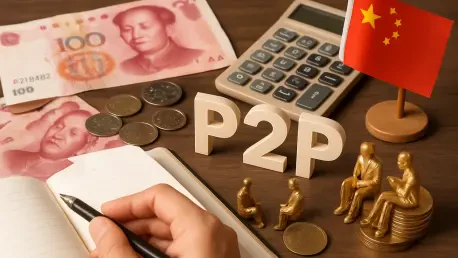China’s approach to overseas development finance has seen a profound transformation in recent years, marking a pivotal transition from direct project funding to a more collaborative model with local financial institutions. This strategic pivot, primarily executed by the China Development Bank and the Export-Import Bank of China, has seen China shift its focus from substantial infrastructure investments under the Belt and Road Initiative (BRI) to nurturing partnerships with national and regional banks. The implications of this shift are significant, as it impacts everything from risk management to global sustainability efforts. This article delves into these changes, exploring how China’s evolving strategy may influence global economic patterns and address environmental challenges.
Restructuring Financial Practices
Transitioning Strategic Focus
The journey of China’s overseas development finance began with large-scale direct loans through the BRI, where China invested heavily in infrastructure projects, including those in energy and transportation. A decade ago, annual funding sometimes exceeded $30 billion, emphasizing large endeavors such as Brazil’s Petrobras and South Africa’s Kusile power plant. However, a distinctive shift has emerged, marked by a stark decrease in direct lending, falling to just $6.1 billion in public and publicly guaranteed loan commitments in recent years. By pivoting towards collaborations with local financial institutions, China is reorienting its efforts to include almost half of its commitments concentrated on the financial sector, notably national and regional development banks.
The reallocation of resources towards financial intermediaries enables more efficient risk management, as delegating the project selection and management to National Development Banks (NDBs) and Regional Development Banks (RDBs) eases the operational load on Chinese DFIs. These developments also coincide with China’s efforts to establish comprehensive environmental and social risk management (ESRM) systems to mitigate the reputational risks associated with direct project investments. Consequently, this collaboration allows China to navigate the complexities of operating within ecologically and socially sensitive landscapes.
Advantages of Local Intermediary Partnerships
The cooperation with local financial institutions provides several advantages, starting with improved operational efficiency through risk-sharing mechanisms. Given China’s geographic distance from many of its lending regions, delegating project oversight to local experts is a pragmatic choice. It not only circumvents institutional challenges but also empowers regional banks with better local-context understanding and project management expertise. China’s DFIs benefit from a strategic shift that lessens the burden of micro-managing numerous small-scale endeavors scattered across various territories.
Moreover, these collaborations have proven invaluable in refining China’s ESRM practices. As the data from China’s Overseas Development Finance Database indicates, a significant share of China’s direct project financing was intertwined with sensitive ecological zones over a span of years. By adopting models similar to multilateral institutions like the World Bank, which boasts rigorous ESRM protocols, Chinese institutions can elevate their commitment to responsible investing. This move is essential for enhancing China’s global image and addressing criticisms linked to the sustainability of past projects.
Challenges and Opportunities
Risks in Emerging Markets
Despite these strategic advancements, China continues to face notable challenges. The risk landscape in emerging markets is complex and multifaceted, often involving ecological vulnerabilities and socio-political sensitivities. The reliance on local intermediaries does dilute some of the direct exposure to these risks; however, accountability and oversight remain critical concerns. Empirical studies suggest that projects directly funded by Chinese DFIs still pose a higher threat to biodiversity and indigenous communities compared to those under strict oversight by multilateral entities.
To improve risk mitigation, China introduced the 2021 Green Finance Guidelines (GFGs) aimed at enhancing ESRM practices, which underline the significance of community consultations and grievance redress mechanisms. Nonetheless, the guidelines have faced scrutiny due to the absence of detailed performance indicators, which ultimately undermines their effectiveness. Recognizing these shortfalls, China’s development strategy emphasizes intermediary lending as an interim solution while it continues to bolster its ESG (Environmental, Social, and Governance) structures.
Aligning with Sustainability Goals
Concurrent to refining its investment protocols, China’s repositioning aligns with broader global sustainability objectives. Notably, initiatives such as the “Green BRI” signify China’s promise to contribute to worldwide energy transitions and foster sustainable development, particularly in developing regions. The 2024 Forum on China-Africa Cooperation underlines China’s intent to advance partnerships centered around renewable energy, with notable initiatives directed towards solar projects in nations like Namibia and Zambia.
However, the path is fraught with hurdles, primarily due to a lack of robust project development facilities, particularly in the Global South. This shortage impairs the creation of a consistent pipeline for innovative green energy projects. To address this, China has launched the Green Investment and Finance Partnership (GIFP), a facility intended to act as a crucial conduit for initial project feasibility assessments. Such measures are indispensable for China’s broader strategy to assert its influence in adopting sustainable, low-carbon development models.
Future Outlook and Strategic Considerations
Infrastructure and Environmental Safety
The pursuit of sustainable overseas investments mandates robust infrastructure development at foundational levels. Without established ESRM systems, the delegation of project responsibilities to regional peers remains a tactical necessity, rather than a long-term solution. The sophistication of these systems is vital for ensuring developmental projects not only meet local community needs but also uphold international environmental standards.
Despite significant strides in strategic shifts, there lingers a need for innovative project design beyond interim measures. Strengthening these systems will empower China to embed sustainability into the core of its foreign investments, crucial for fostering mutual growth amidst global environmental challenges.
Catalyzing Sustainable Impact
In recent years, China’s method of funding overseas development has drastically changed. This transformation marks a significant departure from the previous model of direct project funding to adopting a more collaborative approach involving local financial institutions. This strategic reorientation is largely driven by the China Development Bank and the Export-Import Bank of China. The focus has shifted from pouring money into vast infrastructure projects under the Belt and Road Initiative (BRI) to fostering partnerships with national and regional banks. The consequences of this strategy shift are considerable, influencing risk management, economic stability, and efforts toward global sustainability. By creating deeper financial collaborations, China not only aims to mitigate the risks associated with large-scale international investments but also addresses global environmental challenges more effectively. This article examines how China’s changing strategy could impact worldwide economic trends and contribute to addressing ecological issues, potentially reshaping the global financial landscape.









